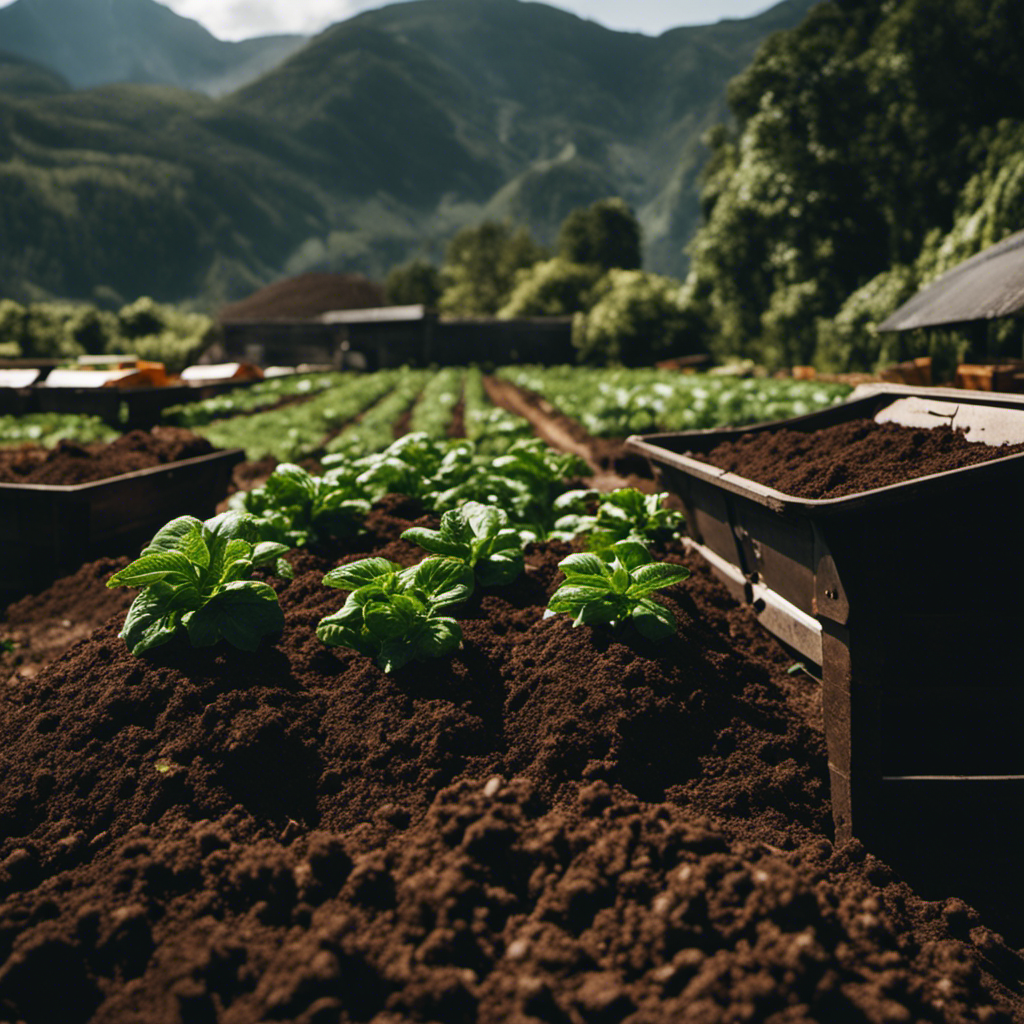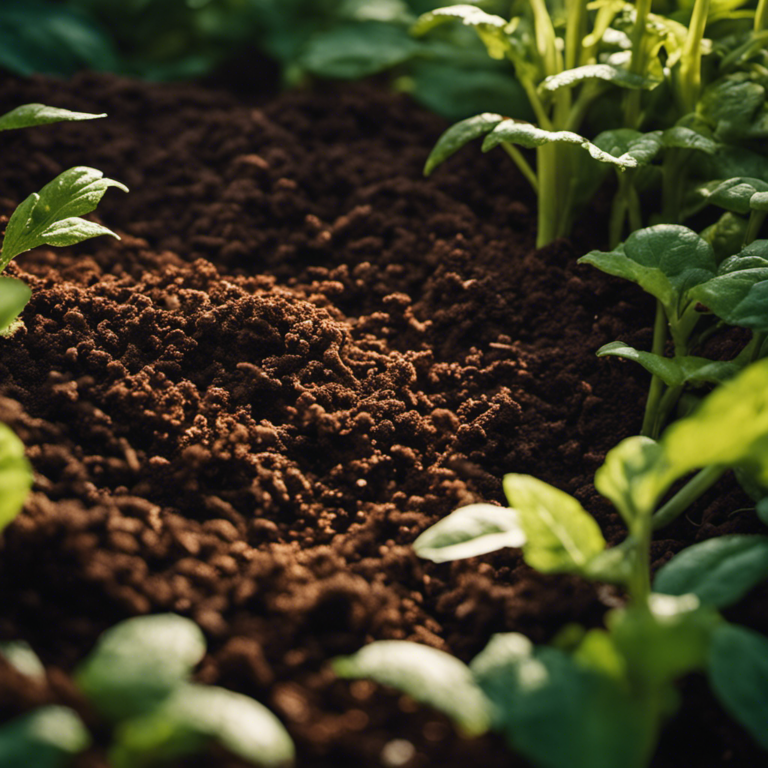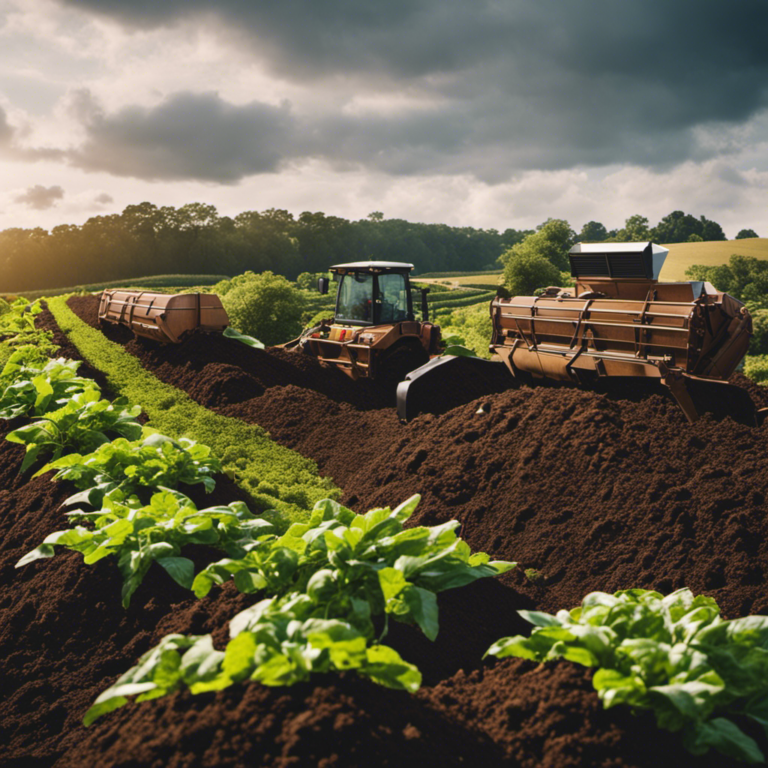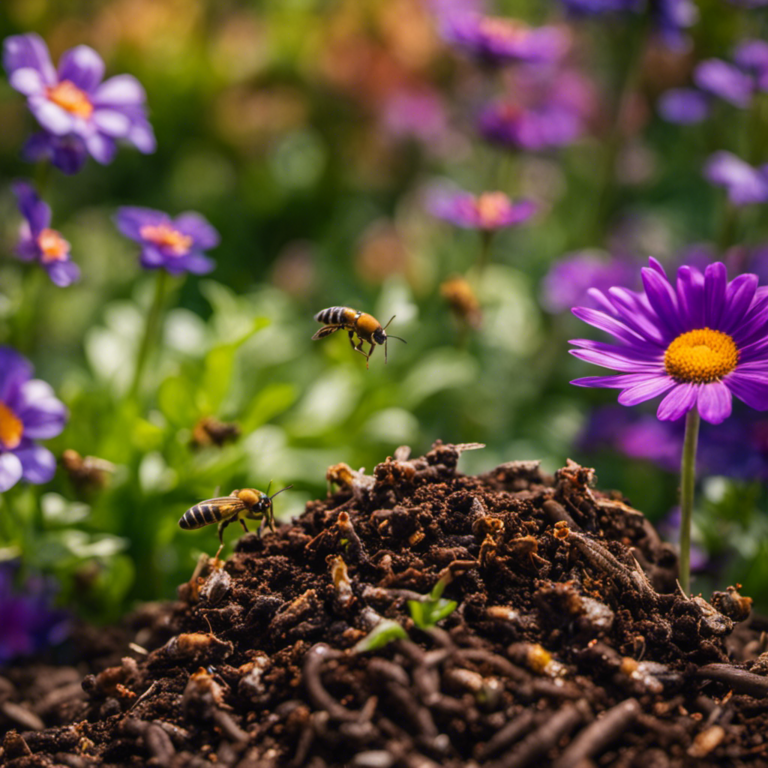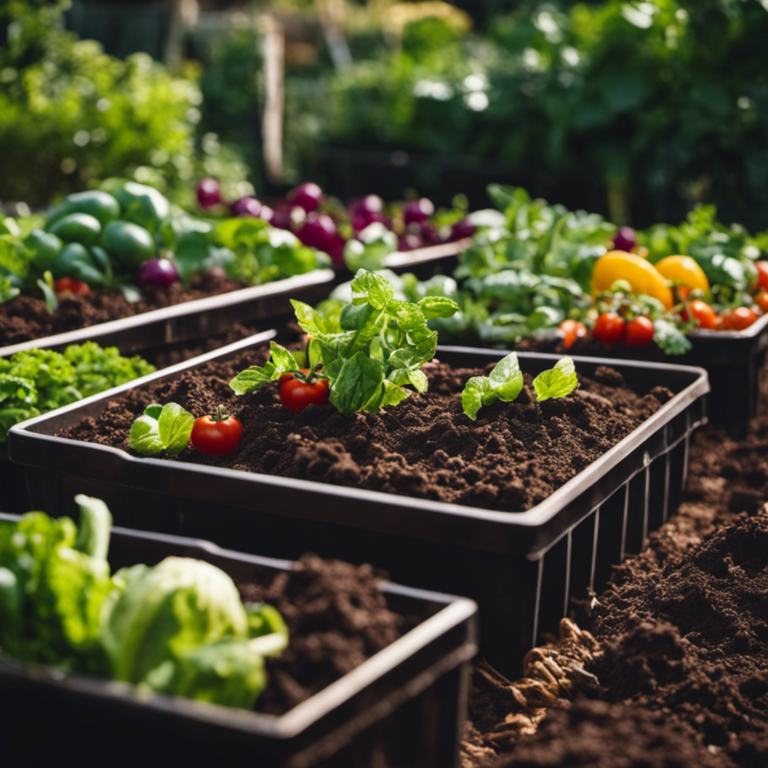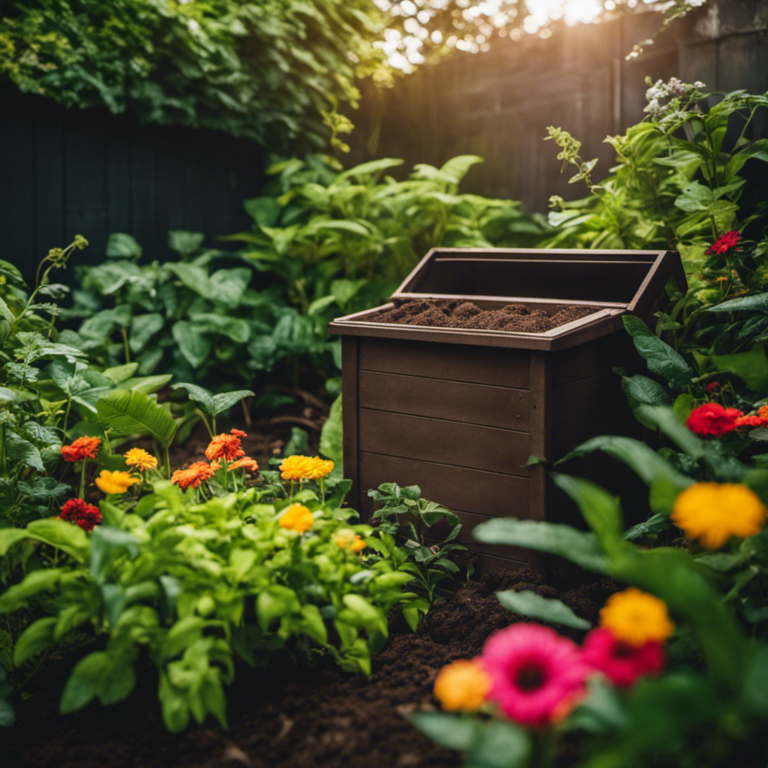I’ve always been interested in the wonders of composting, especially its role in organic farming. It’s incredible how a simple process can turn kitchen scraps and yard waste into nutrient-rich soil.
In this article, we’ll explore advanced composting methods such as hot composting, vermicomposting, bokashi composting, aerated static pile composting, and biochar composting. By understanding these techniques, we can learn how to create healthy and sustainable ecosystems that benefit our gardens and the environment.
Key Takeaways
In the world of organic farming, advanced composting techniques play an important role in maximizing sustainable agriculture. Methods like hot composting, vermicomposting, bokashi composting, aerated static pile composting, and biochar composting are powerful tools that enrich the soil and support the growth of healthy, nutrient-rich crops. These composting methods not only convert waste into valuable organic matter but also demonstrate our commitment to a more sustainable and balanced relationship with the Earth. By utilizing these techniques, we can improve soil health and contribute to a more sustainable food system.
Hot Composting
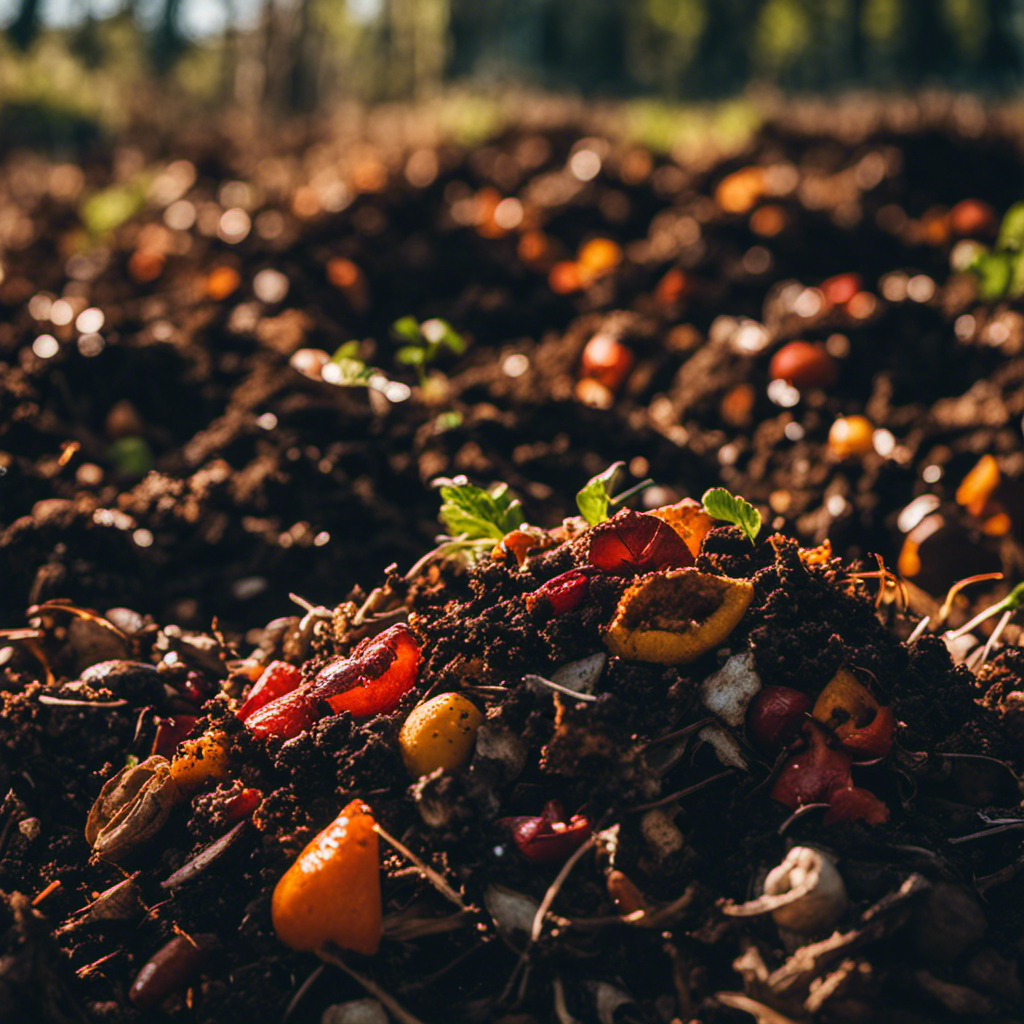
Hot composting is a process that uses high temperatures to quickly and efficiently break down organic materials. This method offers several benefits for small-scale urban gardens. One of the main advantages is that hot composting speeds up the decomposition process, allowing gardeners to produce nutrient-rich compost in less time. This is particularly helpful for urban gardeners who have limited space and need to maximize their compost production. Additionally, hot composting helps eliminate weed seeds and harmful pathogens, reducing the risk of weed growth and plant diseases in the garden.
Maintaining the temperature in hot composting systems is crucial for success. Here are some tips to ensure optimal temperature levels. First, it’s important to have a good balance of carbon-rich materials, such as dry leaves or straw, and nitrogen-rich materials, such as kitchen scraps or grass clippings. This ratio should be around 30:1 to promote the growth of heat-generating microorganisms. Second, regularly turning the compost helps distribute heat evenly and prevents cold spots from forming. Mixing the materials also introduces oxygen, which is beneficial for the aerobic decomposition process. Lastly, keeping the compost pile moist but not overly wet is important to maintain the ideal temperature range of 130-160°F (55-70°C). It’s recommended to regularly monitor the temperature with a thermometer to ensure optimal conditions.
Vermicomposting

Vermicomposting, an alternative method to hot composting, utilizes worms to break down organic materials. This process, also known as worm farming, involves specific species of worms, such as red wigglers, decomposing organic waste and transforming it into nutrient-rich soil. These worms efficiently break down organic matter through their feeding and digestion processes.
To create an ideal environment for the worms, vermicomposting requires organic waste such as fruit and vegetable scraps, coffee grounds, and shredded paper. The worms feed on this waste and produce nutrient-rich castings, also known as vermicast or worm castings. These castings contain beneficial microorganisms, enzymes, and nutrients, making them an excellent soil amendment for organic farming.
One of the key advantages of vermicomposting is its ability to produce high-quality compost in a relatively short period. The worms accelerate the decomposition process, resulting in nutrient-rich soil that enhances plant growth and health. Additionally, vermicomposting helps reduce organic waste going to landfills, contributing to waste management and environmental sustainability.
Bokashi Composting
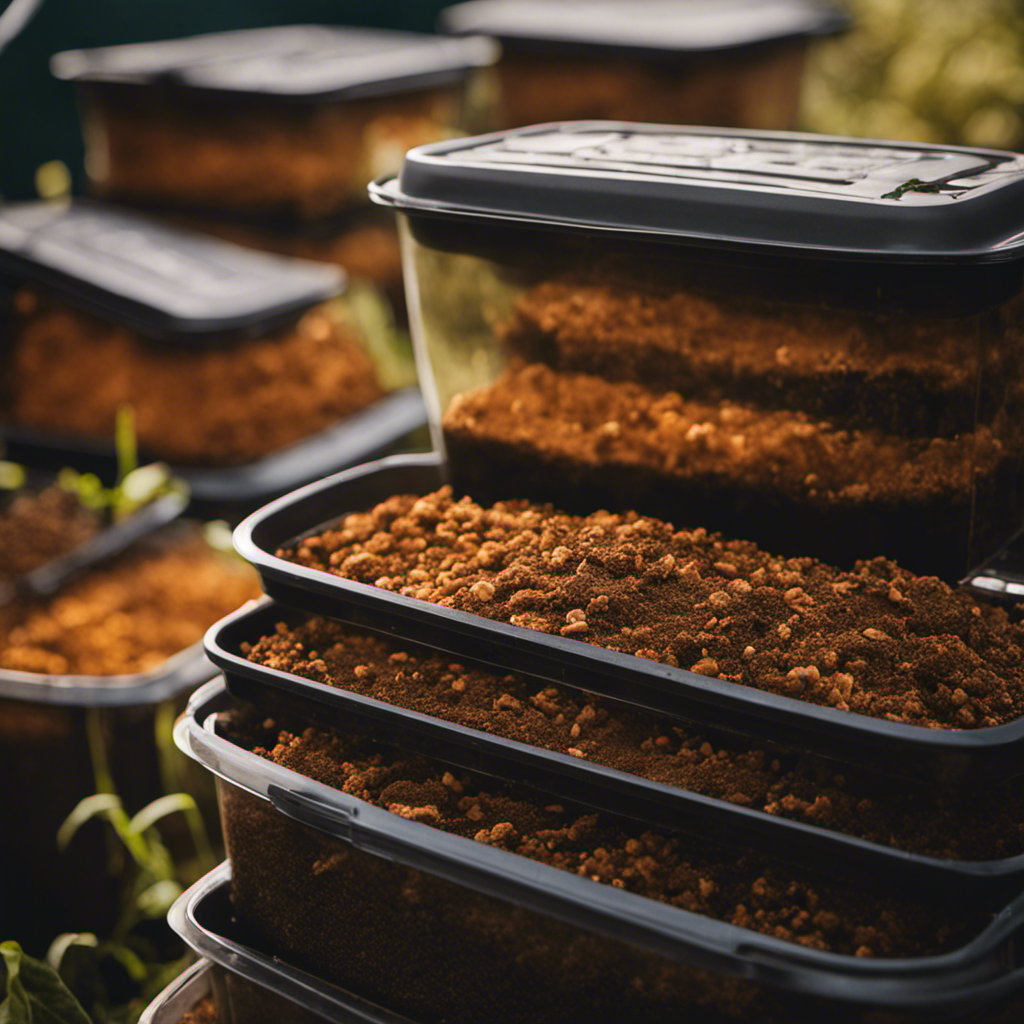
I have discovered that using bokashi composting has significantly improved my organic farming practices. Bokashi composting is a fermentation process that harnesses beneficial microorganisms to break down organic waste. This method offers several advantages over traditional composting techniques, making it a valuable tool for any organic farmer.
Here are five key benefits of bokashi composting:
-
Quick and efficient: Bokashi composting ferments organic waste much faster than traditional composting. In just a few weeks, nutrient-rich compost can be produced, compared to several months with other methods.
-
Accepts all organic waste: Bokashi composting can handle a wide variety of organic materials, including kitchen scraps, meat, dairy, and even small amounts of cooked food. This versatility allows for a comprehensive waste management system on the farm.
-
Odor control: The fermentation process in bokashi composting reduces unpleasant odors commonly associated with decomposing organic matter. This makes it a suitable option for urban farming or areas with strict odor regulations.
-
Retains nutrients: Unlike traditional composting, bokashi composting preserves the integrity of nutrients in the organic waste. This nutrient-rich compost can then be used to enhance soil fertility and promote healthy plant growth.
-
Minimal space requirements: Bokashi composting can be carried out in small, compact bins, making it ideal for farmers with limited space. This allows for easy integration into existing farming systems.
Aerated Static Pile Composting
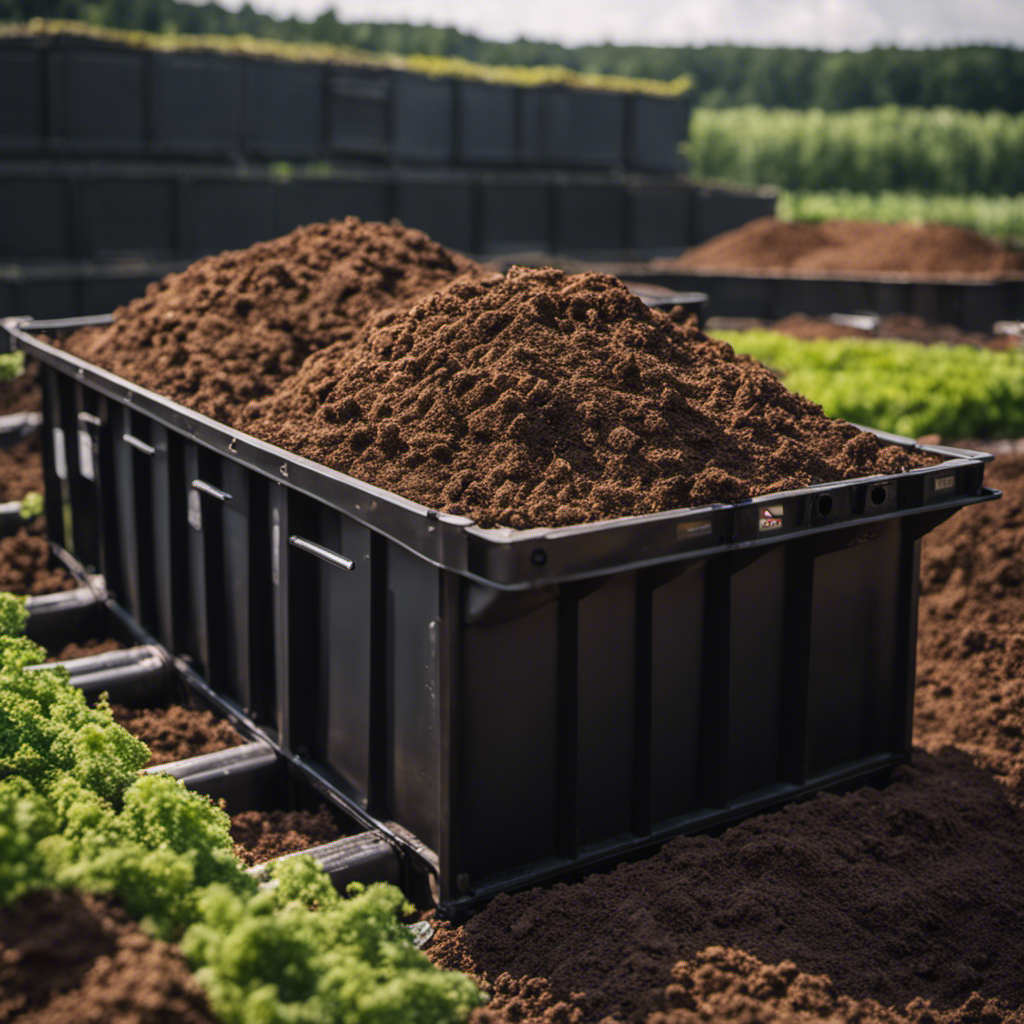
Aerated Static Pile Composting offers a practical solution for organic farmers who want an efficient way to decompose organic waste. This composting method involves creating a large pile of organic material, such as crop residues, animal manure, and food waste. By continuously supplying air to the pile, microbial activity is enhanced, and the composting process is accelerated.
One of the advantages of aerated static pile composting is its ability to handle a wide range of organic waste materials. This method allows farmers to compost various materials, including those with high moisture content like food waste, without the need for additional bulking agents. The continuous airflow ensures proper oxygen levels for aerobic decomposition, resulting in faster breakdown of organic matter and the production of high-quality compost.
However, aerated static pile composting does come with some challenges. It can be demanding to maintain the right moisture levels and temperature throughout the composting process. Excessive moisture can lead to anaerobic conditions and unpleasant odors, while insufficient moisture can slow down decomposition. Similarly, improper temperature control can affect the activity of beneficial microorganisms and prolong the composting time.
To optimize the aerated static pile composting process for better results, organic farmers should regularly monitor and adjust key parameters such as moisture content, temperature, and airflow. By ensuring the right conditions for microbial activity, farmers can produce compost that’s rich in nutrients, free from pathogens and weed seeds, and ready to be used as a valuable soil amendment on their organic farms.
Biochar Composting
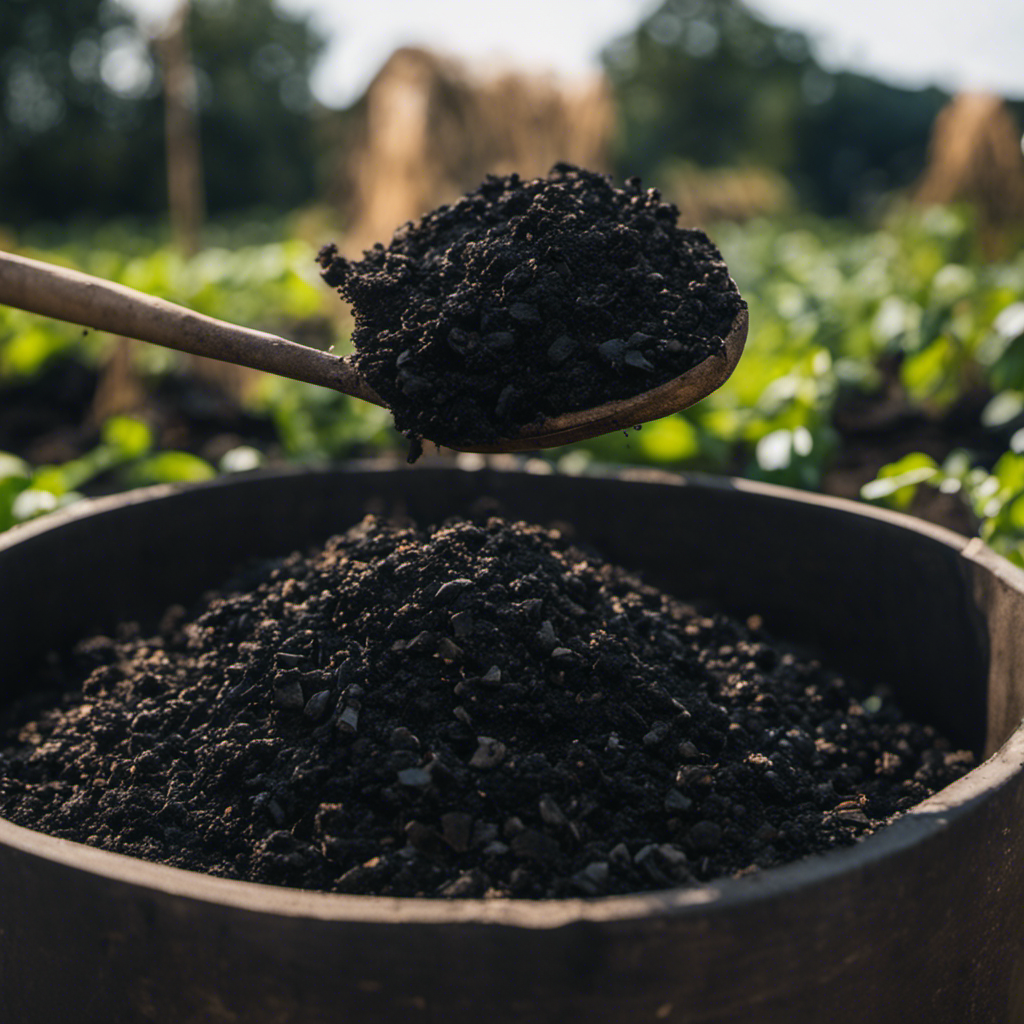
Biochar composting involves incorporating biochar, a specific type of charcoal, into the composting process to enhance its benefits for organic farming. Using biochar in composting offers several advantages for organic farming practices:
-
Increased nutrient retention: Biochar has a high surface area and porosity, allowing it to absorb and retain nutrients in the compost. This ensures a gradual release of nutrients over time, providing a consistent supply for plant growth.
-
Improved soil structure: Biochar helps improve soil structure by increasing water-holding capacity and preventing compaction. This creates better conditions for root penetration and aeration, resulting in healthier plants with stronger root systems.
-
Enhanced microbial activity: Biochar provides a habitat for beneficial microorganisms such as bacteria and fungi, which play a crucial role in nutrient cycling and disease suppression. This leads to improved soil health and reduces the need for synthetic fertilizers and pesticides.
-
Carbon sequestration: Biochar is a stable form of carbon that can remain in the soil for extended periods, contributing to climate change mitigation. By incorporating biochar into compost, organic farmers can store carbon in the soil, helping to reduce greenhouse gas emissions.
-
Reduced nutrient leaching: Biochar has the ability to bind to nutrients and prevent them from leaching out of the soil. This helps reduce nutrient runoff and the pollution of water bodies, promoting environmental sustainability.
Incorporating biochar into composting can significantly enhance the benefits of organic farming, including improved nutrient retention, soil structure, microbial activity, carbon sequestration, and reduced nutrient leaching. By utilizing biochar in composting, organic farmers can promote sustainable and environmentally-friendly agricultural practices.
Conclusion
In the realm of organic farming, advanced composting techniques play a crucial role in unlocking the full potential of sustainable agriculture.
Methods such as hot composting, vermicomposting, bokashi composting, aerated static pile composting, and biochar composting are powerful tools that help nourish our soil and promote the growth of healthy, nutrient-rich crops.
These composting methods not only transform waste into valuable organic matter but also signify our ability to create a more sustainable and harmonious relationship with the Earth.
By utilizing these techniques, we can enhance the health of our soil and contribute to a more sustainable food system.
